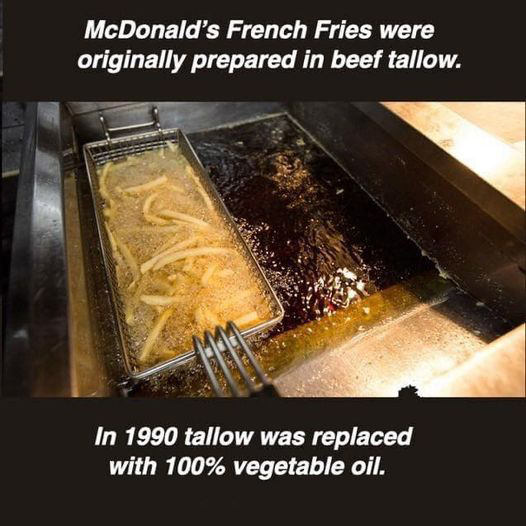McDonald’s fries are an iconic fast-food item loved by millions around the world. However, they aren’t just made of potatoes and oil; in fact, the fries served in the United States have nearly ten ingredients. This article takes an in-depth look at each ingredient, explaining its role in creating the crispy, golden fries we all recognize. This isn’t a critique but rather an exploration of what goes into making McDonald’s fries as delicious and consistent as they are.
The Base of Every Fry

The primary ingredient in McDonald’s fries is, of course, potatoes. Sourced primarily from Idaho, McDonald’s uses specific varieties such as Russet Burbank, Ranger, and Umatilla for their size and texture, ensuring that the fries maintain a consistent quality and taste across all locations. These potatoes are carefully selected to meet McDonald’s global standards, ensuring they are just right for the frying process.1
Two key differences, though, that American fries no longer contain dimethylpolysiloxane – whichc gave the fries some of their glow and helped with the bonding of salt. Additionally, US fries do not have Tertiary butylhydroquinone, meant to help preserve processed foods.2
For a Crispy Texture

Canola oil is a key component in the frying process. Known for its high smoke point and neutral flavor, it helps give McDonald’s fries their signature crispiness. This oil is used during the initial frying stage before the fries are frozen and shipped to restaurants.
Adding Flavor

Corn oil is another oil used in the frying process. It contributes to McDonald’s fries ’ flavor and helps achieve the desired golden color. Corn oil is rich in polyunsaturated fats and has a high smoke point, making it ideal for frying foods at high temperatures.3
A Key Frying Agent

Soybean oil is included in the blend to fry the fries. Like canola and corn oil, soybean oil helps create the crispy texture McDonald’s fries are known for. It’s also part of the effort to ensure that the fries are consistent in taste and quality. Soybean oil is used to further stabilize the oil blend, preventing it from breaking down during the high-temperature frying process. It ensures the fries maintain their structure and crispiness without containing trans fats, thanks to the fully hydrogenated process.
Hydrolyzed Milk and Wheat Ingredients (Natural Beef Flavor)

To mimic the flavor of the original beef tallow, McDonald’s fries have a natural beef flavor derived from hydrolyzed milk and wheat. This flavoring is introduced during the initial frying process at the supplier’s facility and gives the fries a subtle savory taste that enhances their overall flavor profile.
Ensuring a Golden Hue

Dextrose, a form of glucose derived from corn, is added to the fries during processing. Its role is to ensure all of McDonald’s fries achieve a uniform golden color during cooking. It doesn’t add sweetness but helps prevent the fries from turning gray after they are cooked.
Sodium Acid Pyrophosphate

This ingredient is used to prevent the fries from discoloring after they are cut and exposed to air. Sodium acid pyrophosphate helps maintain the fries’ appetizing color and also protects their texture during the freezing and frying processes.
Salt

Salt is added after frying to enhance the flavor of the fries. It’s a simple yet crucial ingredient that adds to the overall taste experience. For those who prefer less salt, McDonald’s offers the option to order fries without any added salt.
Citric Acid

Citric acid is used as a preservative to prevent the oils from oxidizing and becoming rancid during storage and shipping. It helps maintain the quality and freshness of McDonald’s fries, ensuring they taste as expected every time.
Conclusion

McDonald’s fries are more than just potatoes and oil—they are a carefully crafted product designed to deliver the same taste and texture every time you order them. Each ingredient plays a specific role in ensuring that the fries are not only delicious but also consistent in quality, making them a favorite for millions worldwide.
